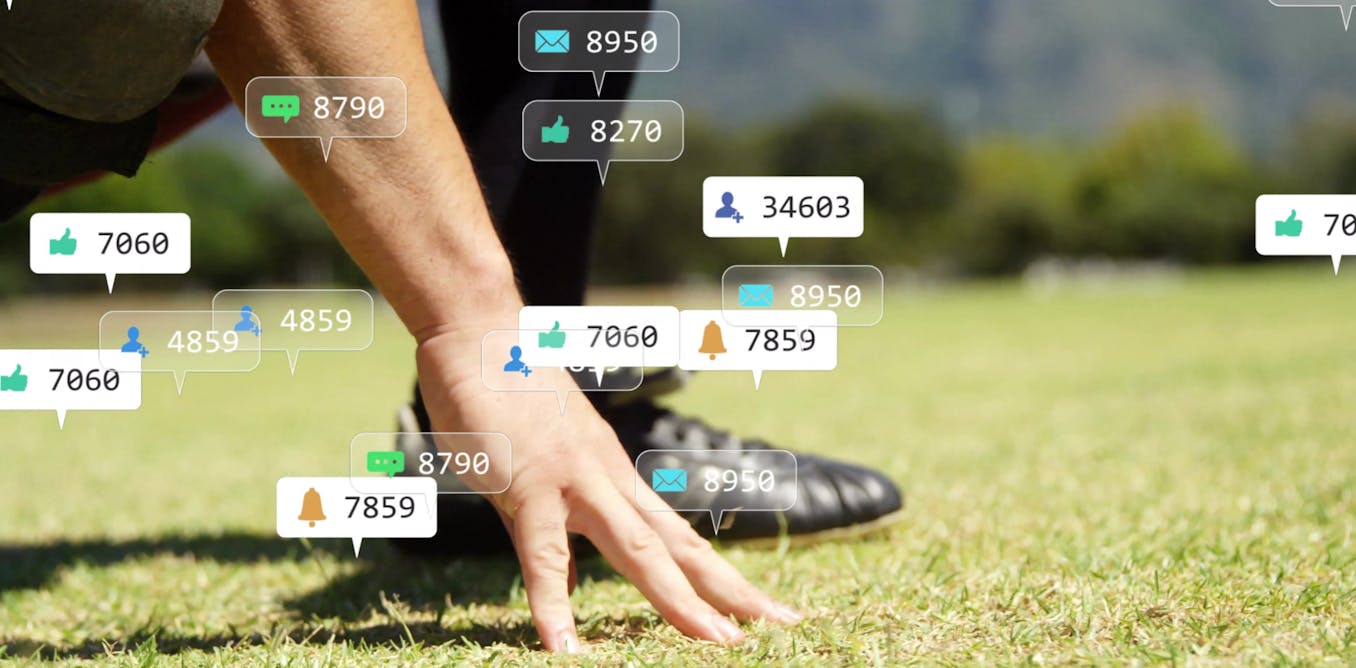40% of the global population is overweight or obese. Highly processed industrial foodstuffs are largely to blame. But food companies continue to focus on products that are addictive.
Sugar is one of the strongest “drugs” and can get consumers really hooked. Food giants know this only too well. That’s why they use sugar, fats and flavor enhancers to encourage people to buy their products and boost their profits. The result: more and more people around the world are overweight or obese. Illnesses such as diabetes and cardiovascular disease are becoming more prevalent. What can be done to change or even put a stop to the food industry’s strategies?
#documentary #dwdocumentary #junkfood #food
______
DW Documentary (English): https://www.youtube.com/dwdocumentary
DW Documental (Spanish): https://www.youtube.com/dwdocumental
DW Documentary وثائقية دي دبليو (Arabic): https://www.youtube.com/dwdocarabia
DW Doku (German): https://www.youtube.com/dwdoku
DW Documentary हिन्दी (Hindi): https://www.youtube.com/dwdochindi
From the age of 13, I started stuffing myself with potato chips, pastries and cookies. I’d sit in front of the TV and just eat more and more. The ads showed all this stuff that looked really tasty – and I needed to try everything.
At school, I got picked on a lot about my weight. I was angry with myself. Why am I gaining so much weight? Why am I so ugly? Why do people think I’m a monster? Why do I get insulted in the street by strangers, just because of how I look?
I was mad at myself for putting on so much weight and not being able to lose it. In movies, people seemed to have no problem losing weight. But reality is different. Carole is 34 years old and lives near the Swiss city of Lausanne. Since her teens, her diet has consisted primarily of sandwiches,
Snacks and sugary drinks… junk food. The more I ate, the worse I felt – including my problems with how people looked at me. And I ate more to feel better. It was a vicious circle that I couldn’t escape from. And my “doses” continually increased.
Of things that were sweeter or saltier or more flavorful. I gradually lost control. Sugar, salt and fat: three ingredients that make food irresistible. Scientists working for manufacturers are constantly trying to find the perfect combination of these tempting ingredients. We talked to a man who knows the industry inside and out,
And reveals the strategies deployed by the food giants. Those three ingredients are very powerful. Salt, they call it the flavor burst, because typically, it’s on the surface of chips, on snacks. It’s the first thing that touches the tongue. They love fats, as well, because those are what they call the mouth feel.
The sensation of biting into, you know, a warm, toasted cheese sandwich. And then, probably, the most powerful of the three for many people, is sugar. Just, by natural, by basic instinct. And so the industry has engineered what they call the bliss point, the perfect amount of sugar in products:
Not too little, not too much, working on maximizing the allure of their products. The investigative journalist spent years researching for his best-selling book on the food industry and the manufacturing of processed foods. I resisted calling their products addictive, because it seemed crazy to me to compare Oreo cookies with heroin.
It just seemed ludicrous. But I have to say, that several things completely changed my mind. And I’m now convinced that in some ways, these food products are even more problematic for us than tobacco, alcohol, even some kinds of drugs. It’s no longer a secret that these highly processed products
Are directly linked to the global obesity epidemic. Carole is a patient at the obesity clinic of the University Hospital in Lausanne. Two years ago, her obesity almost killed her. She was barely able to move or even breath. She’s recently undergone gastric bypass surgery, which drastically reduced the size of her stomach.
Carole’s come to the clinic today to see an endocrinologist and a psychiatrist. She’s already shed 35 kilos, but has a lot of things to re-learn – such as the sensation of feeling hungry or full. She also has to learn self-respect again. She’s got a long road ahead of her. How have you been?
I don’t feel like there’s been a change or I’ve lost any weight. In the mirror, I can’t see any difference. I do see it in the clothes, though. The shirt I’m wearing used to be too small for me. And there are some pants that were too small
That I can wear again, and others that are now too big! The multidisciplinary department at Lausanne University Hospital has around 15-hundred overweight patients on its books. Carole is one of the 220 who suffer from obesity. We’ve seen an explosion in the number of patients suffering from extreme obesity.
In recent decades our immediate environment has seen changes so profound that we now call it obesogenic or toxic. And toxic in terms of calories. Advertising and special promotional offers encourage us to eat more and more food – and often of poorer quality. And this compromises our personal freedom.
Here in Switzerland, 42% of the population is overweight. One in ten is obese. There’s a link between the emergence of ultra-processed junk food, the decrease in physical activity, and increase in screen time. And this ensemble of environmental factors favors the explosion of obesity that we’re currently seeing.
Research papers show growing indications of the link between obesity and the consumption of industrially processed foods. Absolutely. Ultra-processed foods often have calories in extremely large quantities while not necessarily making you feel full. And in the context of this explosion in obesity, these foods clearly play a major role.
A doctor linking unhealthy food to obesity is understandable. But what we might not expect is the world’s largest food manufacturer admitting the same. In 2021, Nestlé came under fire after details from an internal presentation were published by the Financial Times. The document showed the company acknowledging
That the majority of its products were unhealthy. Over 60% did not meet a “recognized definition of health”. The data did not include coffee, baby formulas and food for specific medical conditions. The presentation was intended for company executives as a basis for revising their corporate strategy. And the multinational’s response to the revelation?
Was it a shock to learn that far more products than expected were below this threshold for unhealthy foods? Once we realized this, we knew we had to do something. We want to determine which products we should keep, which ones we discard, and which ones we could reformulate.
And this is a policy that you’re following because there is a real awareness that a lot of your foods are unhealthy? Or because you need to keep selling products to stay number one in the world? We want to be there for consumers, and be where they are.
With Covid, there’s been growing concern about health and immunity – and about sugar intake. People are now more aware of the need to reduce their consumption. We want to accompany people on that journey to eat better and stay healthy. Nestlé has already removed a number of product lines from its portfolio,
Such as sausage products. But why didn’t the Swiss multinational and other food giants change course sooner? Minneapolis, USA. The 8th of April, 1999. A secret meeting brought together the CEOs of the country’s eight biggest food companies – among them, Nestlé USA.
On the agenda: their role in one of the most serious public health epidemics ever seen in the US: rising overweight and obesity rates. There is growing concern about their culpability of their products to weight gain, to diabetes, to even several types of cancer.
And they get together and one of them, a gentleman named Michael Mudd, who’s an executive vice president of Kraft, one of the biggest companies of all, introduces the crowd, and gets up and explains the situation. “We cannot pretend food isn’t part of the obesity problem…
No credible expert will attribute the rise in obesity solely to decreased physical activity. The one thing we shouldn’t do is nothing…” As you can imagine, he was not well received by the heads of the companies and one of the company executives gets up and he’s kind of visibly angry
And he goes, you know, look, there’s no way, he says, that we’re going to mess around with the company jewels, – referring to their powerful ingredients like salt, sugar, fat – if that’s going to diminish the allure, the attractiveness of the sales.
The corporations saw no reason – or incentive – to change anything. The meeting ended abruptly – illustrating their lack of interest. There was – seemingly – no stopping the obesity epidemic – as shown by the growing amount of red on this map. Weight gain is rapidly increasing – worldwide.
The darker the shades of red, the higher the rates of obesity. Mexico is among the countries most gravely affected. Over three-quarters of the adult population here are classified as overweight or obese. Mexico also has one the worst rates of child obesity. In grocery stores here, the shelves are packed with junk food.
Obesity is prevalent among all ages of the population… including Rogelio, who mostly eats chips, other snacks, and sugary drinks. Ever since I was little, I’ve been eating this type of food. My mother never told me to eat fruit instead. She always said: If you like it, then eat it.
Rogelio is a cab driver. He spends up to 12 hours a day in his car. It’s super-tasty and helps me keep on working. I can keep driving without having to stop to feed myself. At home, it’s the same. Fast, fatty and cheap food – washed down with soda.
Rogelio has two children: a daughter in her teens, and a little boy. I’ll show you some pictures where I was a little fat. Me with my son. Here I weighed about 120 kilos… and in this picture, 126 kilos. Was all that weight a burden?
Yes, I was really suffering. You don’t want to go out anymore, because you’re immediately out of breath. Honestly, I was just lying around and eating continuously. Since then, I’ve been trying to lose some weight, so I can live longer. The current government has made the battle against obesity a priority.
And leading the charge… is Hugo López-Gatell – a doctor, trusted advisor to the president and deputy minister of health. For at least the last 15 years, about a third of all deaths in Mexico have been caused by poor nutrition. And that’s mainly due to excess amounts of sugar, calories, fat and salt.
In 1980, just under 7% of the population in Mexico was obese. Since then, the figure has risen over five-fold. In that same time-frame, the country has undergone radical changes – due to the opening of the market to international trade. In the 1980s, there was a very abrupt change. Both economically and socially,
The country turned towards neoliberalism and economic deregulation. At the same time, the protections provided by the state against health risks were dismantled – although it would take a few years for the consequences to become apparent. There was an increase in overweight people – and after about 10 to 15 years,
We were seeing chronic diseases like hypertension, diabetes, obesity and cancer etcetera. The tipping point was the signing of the free trade agreements with the US and Canada in 1994 – which flooded the Mexican market with cheap, processed products. The ubiquity of sugary drinks, like Coca-Cola, is symbolic of this disaster.
Today Mexicans consume an average of 163 liters of soda per person per year. With action urgently needed, the Mexican parliament passed three essential regulations: a sugar tax, a clamp-down on adverts targeting children, and a warning label prominently displayed on unhealthy products – similar to cigarette packaging.
The measures were lobbied for by consumer groups, doctors and private groups like the one run by Doré Castillo. Today, manufacturers have to declare whether their products contain excess sugar, calories, saturated fat, trans fats, and salt. This is fundamental in the fight against excess weight, obesity and preventable non-communicable diseases.
To avoid these labels, many brands have changed product formulas and reduced the amount of sugar, for example. And then there are there the restrictions on children’s products – in particular the animal mascots. The manufacturers had to remove the tigers from these cereal boxes. Others had an elephant or a toucan.
These images are ingrained in the memory of so many children – and are all part of a marketing strategy to boost sales and brand loyalty. It’s great to see these labels and different packaging helping people make their decisions. It was really tough – part of the general struggle we’re fighting
To protect the health of people in Mexico. Food corporations have launched legal challenges to oppose the mandatory labels. They claim that the labels “prevent consumers from being able to compare products and selecting those that mean a healthy diet.” It’s scandalous that food companies – whether they’re multinational, international or Mexican –
Are so indifferent to human suffering. Basically, they have contempt for ordinary people. I’ve heard these executives so often, pretending to talk to the government. But in reality, they have other intentions: delaying tactics and misinformation in order to win time and keep on making profit
– despite being aware that they are killing people, especially minors. We contacted the big players in the Mexican food industry – but none of them wanted to give us an interview. As for the situation in Switzerland… Here, there are no legal constraints in place to combat overweight and obesity rates
– despite them costing over 8 billion Swiss francs a year in healthcare. How about a tax on sugary drinks? An idea that’s already been adopted in over 50 nations around the world. Among them are a number of European countries, including France and Britain. And: it works.
We take the example of a bottle of Fanta bought in a store in Britain, where it’s subject to the special tax. Some of the sugar has been replaced with a sweetener, reducing the sugar content to 4-point-6 grams per deciliter. The same drink in Switzerland contains 10-point-3 grams of sugar
– over twice the amount. That’s right! 4.6 grams as opposed to 10.3. It’s difficult to tell whether what you’re consuming is healthy. There are 15 different names for sugar, and we never know how high its content actually is. There are marketing tools enabling companies to hide the sugar content.
The government needs to take responsibility here. Politician Delphine Bachmann has submitted an initiative from the Geneva region for the Swiss national parliament. The goal is a tax to limit sugar content in beverages and processed foods. The industry knows full well that the products are unhealthy. Companies know they’re hiding sugar,
But they’re afraid to lose these consumers who’ve become accustomed to the products. They don’t want transparency. What we need is political action, and there are signs of that in a few regions. My hope is that the accumulation of political moves will push our authorities into action – and also raise awareness
Among the population about these issues… and bring about change. Over the last few years, a series of motions have been submitted, calling for state intervention – to no avail. While a sugar tax is not yet on the agenda, the parliament is planning possible restrictions on advertising to children.
A majority of parliament does not want market regulation for ideological reasons. And there are lobby groups linked to sugar production and processing, and the food industry, who have friends in parliament. Lobbies are important sources of expertise and information. But when industry interests become dominant and influence public health and spending, that’s not OK.
We show this politician the soda from Switzerland containing twice the sugar content as the British version. …and the World Bank report on the impact of the sugar tax. “…The taxation of sugar-sweetened beverages is internationally recommended as a priority component of a comprehensive approach to preventing and controlling obesity.”
The World Bank report speaks volumes – and is encouraging reading. It clearly says that hidden sugars are a disaster, and that the sugar content has to be reduced in the interest of public health concerns and public spending. But that’s not going to be of interest for the majority of parliament.
How does parliament explain their resistance? We put that question to 10 Swiss politicians who are also members of a soft-drinks lobby group representing the likes of Coca-Cola, Red Bull and domestic sugary beverage suppliers. A statement by the group claims: “…We are active and transparent participants in the political and social debate.” And yet:
Of the ten members of parliament we asked, none agreed to an interview. For consumers facing a constant flood of advertising, making an informed choice isn’t so straightforward… as we see at this Geneva school. A presentation teaches pupils about the amounts of sugar and fat in processed foods.
Over here are products that, ideally, they should avoid. On the other side are healthy options – the kinds of foods they should be consuming instead of potato chips and sugary drinks. The children show us what they normally eat. Can you show us what you have there? Wow!
Since its introduction 15 years ago, the program has spread… and is now being used by one in three Geneva schools. Eating behavior is formed in early childhood, before the age of 10, when most of our habits develop. The food industry has understood this very well and targets children with aggressive marketing
To get them used to ultra-processed foods and neatly-packaged snacks. Which of these things would you buy first when you’re in a store? Kinder Bueno, candies, M&Ms and apples. Chips, waffles, candies and M&Ms. That’s all. Why? They look tasty! And you? Everything over here! Most people have cravings for sweet, salty and fatty foods.
But for some, like Rebecca, these cravings can become a serious health problem. For 20 years she’s been suffering from a compulsive eating disorder – binge-eating on a regular basis, consuming enormous amounts in a very short period of time. It became a habit. When the emotions got too much, food became my refuge.
Sometimes it felt like a complete disaster inside me – and this was the only way I could cope. Rebecca has been out shopping – to show us what she would typically consume when emotional stress led to binge-eating. A courageous step on her part. So you’d eat all of this in one sitting?
Maybe not everything, but most of it. And how do you proceed? What would you start with? …The ravioli. The ravioli with meat? Yes. With cream sauce. How much? …The whole pack. Plus grated cheese. Also the whole pack? Yes. Everything has to go! And then? You carry on eating?
It depends on how much room I still have in my stomach! These I would’ve eaten on the way here… the whole lot. Then perhaps a couple of madeleines. And then some cookies – the whole pack. And how do you feel then? Not good. The first few bites are always nice.
You have the taste… and you enjoy eating these products. But after a while, there’s no more pleasure. And it’s then simply not possible for you to stop eating? …No. I don’t stop until I have to, physically… when the stomach-ache is so bad that I can’t sit or lie down. And you feel ashamed?
Yes, absolutely. That’s why I do it in secret. I feel ashamed, because nobody’s asking me to eat all of this stuff, in these excessive quantities. Why are you telling us about this now? Saying it out loud is part of my journey – acknowledging it and admitting to myself that I have a problem.
I’m trying to find a way out and a solution. And I want to tell people that this isn’t easy. It’s not just a question of willpower. A lot of it takes place behind closed doors. Rebecca also sought help from the obesity clinic at Lausanne University Hospital.
She’s now working with a psychiatrist on her relationship to food, in order to prevent future binges. So how have you been doing since last week? Good. The intake of food is extremely quick, and the foods are often those that generate a feeling of excitement, and craving. In many cases: sweet, fatty foods.
It’s at this point that they lose control, and are unable to stop. Countless experiments have been conducted on people losing control when consuming particular substances. This rat is quick to learn that pressing a pedal will reward it with a dose of sugar – which it then eats frantically.
A similar experiment showed that rats prefer consuming sugar to cocaine. The power of sugar is far more important than previously thought – as was confirmed by this experiment. Benjamin Boutrel heads a neurobiological research unit for addictive and eating disorders at Lausanne University Hospital.
His area of focus is the mechanism behind addiction and loss of control. We see changes in the brain of someone who cannot control their intake of fatty and sugary foods… And they’re comparable to those seen with excessive and uncontrolled consumption of alcohol, cocaine or tobacco.
We can draw a parallel between the agri-food industry and the tobacco industry – in terms of the way they’ve optimized their products, and how they’ve changed the very nature of their product: in this case, ultra-processing. Tobacco companies add texturizers and flavors to optimize the nicotine efficacy. The objective in both cases
Is to retain their consumers and increase sales. Journalist Michael Moss, who has dubbed sugar, salt and fat an unholy trinity, wanted to understand how US food engineers develop products, and investigated many industry laboratories. The industry hates the word addictive. You won’t see them in their laboratories, talking to each other, like,
How do we make this new potato chip more addictive? They use other terms to describe their efforts to maximize the allure of their products. They talk about engineering “crave-ability” for example, right. They talk about engineering, well, on of my favorite expressions, is “moreishness”, right, as in,
Getting us to want more and more of their product. Are manufacturers deliberately targeting vulnerable consumers? The industry has a formula which they call, sort of, the 80/20 rule, which is that 20% of their customers will be eating 80% of the product. So: a few people eating a whole lot.
They call those people the heavy users. And they will target them through marketing, knowing that those people for various reasons are vulnerable to overeating their products. If they focus on the 20% of customers who are eating 80% of the product, they’re going to maximize their sales.
What about Nestlé, the world’s biggest food corporation? Is it targeting people prone to excessive eating? And why does the company continue marketing products that it has itself called unhealthy? During a one-hour interview, we repeatedly asked questions like these – and were given almost always the same answer.
Nestlé wants to help people to eat well, which means finding the right balance between enjoyment and health. Nestlé’s philosophy is to help consumers eat well, combining enjoyment with a balanced diet, and sound health. And that’s why Nestlé offers both a range of affordable and nutritious products, and gourmet products
That should be consumed in moderation. But it’s known in practice that some of your consumers are heavy users – people who eat excessively. Aren’t these consumers essentially addicted to your products? That’s why we’ve been introducing educational programs. So… But do you think they’re addicted?
Addicted? No, I don’t think so. Not to Nestlé products, at least. Our products are not developed with that in mind. We develop our products to fit a balanced and healthy diet. …Each manufacturer has its own strategy for seducing our appetites. Michael Moss has no doubt that the most vulnerable consumers
Are key to the food giants’ market success. In the sense of defining the word addiction as being kind of this repetitive behavior that some people find difficult to quit, I think that absolutely defines the business model of the processed food industry. Spending every waking hour engineering and marketing their products
In a way that causes us not just to love them, but to want more and more. So what action is Switzerland taking? In 2020 the government stated its opposition to the law in Mexico requiring food manufacturers to declare excessive levels of sugar, fat and salt. They do so using these black warning labels.
What prompted Switzerland to get involved? Several dozen internal e-mails obtained thanks to the country’s freedom of information act show that Nestlé has been approaching the government with its concerns. They include this correspondence between the Federal Department of Foreign Affairs and the State Secretariat for Economic Affairs or SECO.
“I was able to speak with… who confirmed to me the gravity of the problem and the urgent need for action. Nestlé has approached SECO directly to ask for the support of Swiss officials. SECO refused our requests for an interview – unlike Nestlé. We agreed with the aim of the law,
Which was to decrease obesity rates and help consumers eat healthy. What we didn’t agree with was the implementation of this law, because it doesn’t help consumers in their choices. The proposed labeling in Mexico is merely an alarm system, and does not encourage consumers to make better choices.
But isn’t an alert necessary when 76% of the population is overweight or obese? Absolutely. You’re right: we need to set up educational programs to reduce obesity in the population, to help people make better consumer choices. So: Nestlé wants to create support programs? What is certain is that the multinational
Wants to block any statutory requirements. Among the messages sent by Nestlé to the Swiss government is this memo: “The proposal… is too radical and restrictive, and lacks scientific rationale. …The warning messages are susceptible of creating unnecessary fear in consumers…” We showed the memo to Mexico’s deputy minister of health.
My first response is to laugh. But it’s a tragic laugh. I laugh because of the rudeness and stubbornness of the food industry – in this case, a very influential multinational corporation. The companies have spent many years developing this rhetoric. I’m not surprised to see them trying to deceive the public,
Claiming that labelling is not beneficial. Nestlé has now even improved the formulas for a range of its products, in order to avoid the dreaded black labels. It’s understandable for companies to protect their interests. But economic and private interests cannot be placed above the public interest. That’s why we talk about separating
The economic interests from political power. The political power of a sovereign nation involves protecting, defending and promoting public interests. And chief among those interests is protecting children. Nathalie Farpour-Lambert is a pediatrician who’s spent decades counseling overweight minors – helping them in their struggle toward a healthier diet.
In the past, we used to have children who were slightly overweight in relation to their age and height… But today, we have children who are massively overweight – by 20 or 30 kilos or more. What upsets me the most is the fact that children are being manipulated.
They are victims of this food system. They can’t help it. Often, we blame the parents for making the wrong choices and buying unhealthy products. But it’s extremely difficult for them to make the right choice. The labelling isn’t always clear to everyone. We’re violating the human rights of children,
And you have to ask how far things will go. Are we willing to sacrifice one or even two generations? For years now, I’ve been unable to look strangers in the eye. I’ve suffered so much from the mocking and the insults that I’ve retreated into my own bubble.
Sometimes I don’t even think of myself as a person. I’m just this ugly thing. What if you didn’t have your children? I’d have let myself go completely and would have been dead years ago. I didn’t love myself enough to find an escape. I only did it for my children,
Because I love them and want them to have a “normal” mother.
Video “Junk food, sugar and additives – The dark side of the food industry | DW Documentary” was uploaded on 06/30/2023 by DW Documentary Youtube channel.



































